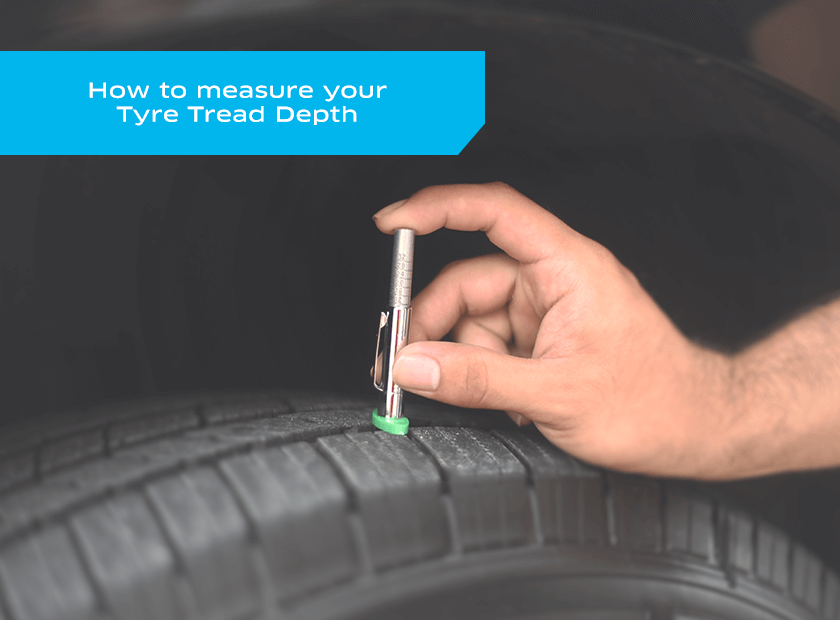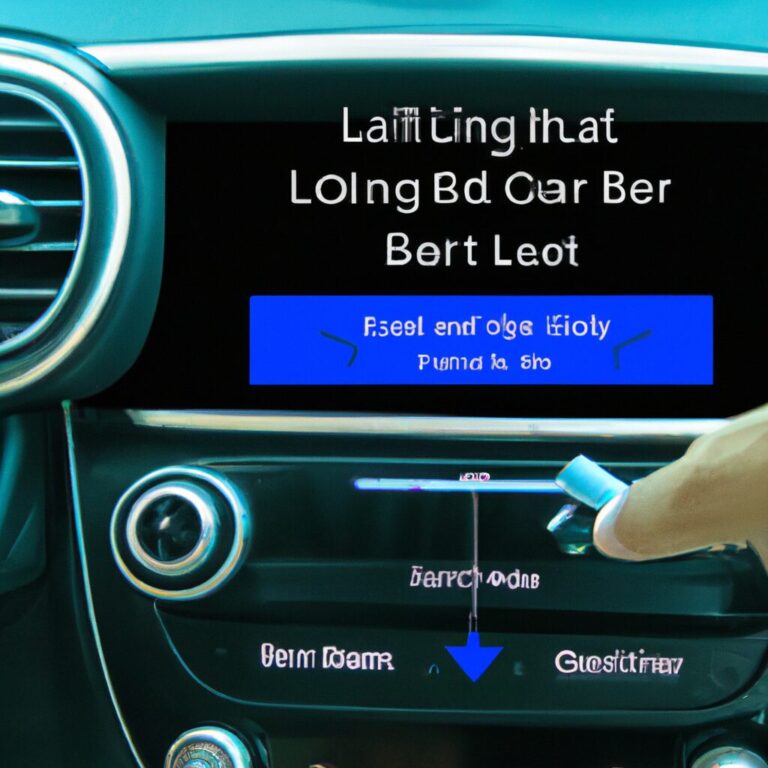How to Read a Tire Depth Gauge
To read a tire depth gauge, place it inside the tread grooves and ensure it rests flat. Use the gauge to measure the depth of the groove to determine tire wear accurately.
Tire maintenance is crucial for safe driving. Understanding how to read a tire depth gauge allows you to monitor tread wear regularly. By measuring the depth of the tread grooves, you can assess tire condition and decide if it’s time for a replacement.
Proper tread depth ensures optimal traction and handling on the road, improving overall safety. In this guide, we will explore the steps involved in reading a tire depth gauge correctly to keep your tires in top condition.

Credit: www.pclairtechnology.com
Step-by-step Guide
When it comes to maintaining your vehicle, understanding the importance of tire wear is crucial. Proper tire tread depth is essential for safe driving and can help you avoid accidents due to hydroplaning or loss of traction. One of the tools used to measure tire tread depth is the tire depth gauge, and knowing how to use it correctly is essential for your safety on the road. Here’s a step-by-step guide to help you read a tire depth gauge accurately.
End of Section Start of Subheading: Step 1: Familiarize yourself with the gaugeStep 1: Familiarize Yourself With The Gauge
Before you start measuring the tread depth, familiarize yourself with the tire depth gauge. Different gauges may have varying designs, but the basic function remains the same. Familiarizing yourself with the gauge ensures that you understand how it operates, making the measurement process much easier.
End of Subheading Start of Subheading: Step 2: Identify the tread wear indicatorsStep 2: Identify The Tread Wear Indicators
Identifying the tread wear indicators on the tire is crucial. Look for small bars or “wear bars” located within the tread grooves. Once your tread wears down to the level of these bars, it indicates that the tire needs replacement.
End of Subheading Start of Subheading: Step 3: Place the gauge on the treadStep 3: Place The Gauge On The Tread
Placing the gauge on the tread requires positioning it perpendicular to the tire’s surface. Ensure that the entire measuring rod makes contact with the tread and that it is not slanted, as this could affect the accuracy of the measurement.
End of Subheading Start of Subheading: Step 4: Read and record the measurementStep 4: Read And Record The Measurement
After placing the gauge on the tread, read the measurement displayed on the gauge. Record the depth in millimeters or inches, depending on the unit of measurement used on your gauge. This recorded measurement will help you determine if your tire tread depth is within the safe range.
Step 5: Repeat The Process For Other Tires
Ensure that you repeat the measurement process for all the tires on your vehicle. Each tire may exhibit different wear patterns, so it’s essential to measure and record the tread depth for every tire individually to ensure optimal safety.
End of Subheading
Credit: www.tirebuyer.com
Benefits Of Using A Tire Depth Gauge
Keeping track of your tire’s tread depth is crucial for safe driving. Using a tire depth gauge provides several key benefits that can help you maintain optimal tire performance and improve overall vehicle safety while saving money in the long run.
Maintaining Optimal Tire Performance
Regularly checking and monitoring your tire tread depth with a gauge helps you determine the health of your tires. Proper tire depth ensures better traction on the road, enhancing handling and braking efficiency.
Improving Overall Vehicle Safety
Maintaining adequate tread depth is essential for preventing skidding and maintaining control in various weather conditions. Checking tire depth regularly with a gauge helps you identify potential issues early on, ensuring your safety on the road.
Saving Money By Ensuring Proper Tire Wear
Using a tire depth gauge to check and maintain proper tread depth can extend the lifespan of your tires and improve fuel efficiency. Ensuring optimal tire wear helps you avoid premature tire replacements, saving you money in the long term.
Common Mistakes To Avoid
Using The Wrong Type Of Gauge
Ensure to choose the right tire depth gauge for accurate readings.
Measuring At The Wrong Locations On The Tire
Measure tread depth in multiple spots across the tire for an average.
Neglecting Regular Tire Inspections
Regularly check tire condition to ensure safety and longevity.

Credit: www.amazon.ae
Tips For Extending Tire Lifespan
Learn how to read a tire depth gauge with these helpful tips. Extend the lifespan of your tires by accurately measuring the tread depth to ensure proper maintenance and safe driving conditions.
Rotate Tires Regularly
Regularly rotating your tires helps to distribute the wear evenly across all four tires. Front tires tend to wear faster than rear ones due to turning and braking forces, so rotation helps maximize their lifespan. It’s recommended to rotate your tires approximately every 6,000 to 8,000 miles or as per the manufacturer’s guidelines. A professional tire technician can assist in performing this rotation to ensure it’s done correctly.
Maintain Proper Tire Inflation
Maintaining optimal tire pressure is crucial for extending tire lifespan. Underinflated tires create extra heat, leading to faster wear, while overinflated tires wear down more in the center. Regularly check the tire pressure using a gauge and ensure that it matches the recommended PSI provided by the vehicle’s manufacturer. Proper tire inflation not only extends tire life but also enhances fuel efficiency and overall safety.
Avoid Harsh Driving Conditions
Avoiding harsh driving conditions such as rapid acceleration, sudden braking, and driving over potholes and rough terrain can significantly impact tire wear. Smooth and cautious driving behavior helps to minimize unnecessary stress on the tires, thus extending their lifespan. Additionally, try to avoid carrying heavy loads or towing heavy trailers regularly, as this can put extra strain on the tires.
Check Tire Pressure Frequently
Frequent monitoring of tire pressure is crucial for maintaining optimal performance and extending tire lifespan. A quality tire depth gauge can assist in checking the pressure accurately. Ensuring the tires are properly inflated can prevent premature wear and prolong the life of your tires. Setting a monthly reminder to check the tire pressure or doing so when refueling can help establish this as a regular habit.
Frequently Asked Questions Of How To Read A Tire Depth Gauge
How Do You Read Tire Depth?
To read tire depth, look for the tread wear indicators or use a tread depth gauge. Place the gauge into the grooves and check the measurement. If the tread is worn down to 2/32 of an inch or less, it’s time to replace the tire.
Where Do You Put The Tire Tread Depth Gauge?
Place the tire tread depth gauge between the treads, ensuring it touches the bottom. Measure at several points and take the lowest reading.
What Is Normal Tire Tread Depth?
Normal tire tread depth is typically around 1/8 inch or 3. 2mm. It is important to regularly check and maintain proper tread depth for optimal safety and performance.
Is 6 32 Tread Depth Good?
A tread depth of 6/32 inches is considered good for normal driving conditions. It provides decent traction and safety on roads.
How Do You Use A Tire Depth Gauge?
Using a tire depth gauge is simple. Insert the gauge into multiple tread grooves and read the depth measurement.
Why Should I Measure Tire Depth?
Measuring tire depth helps determine if your tires are worn out or need replacement, ensuring your safety on the road.
What Is The Ideal Tire Depth?
The ideal tire depth varies, but typically, any depth above 4/32 of an inch is considered safe for most driving conditions.
Conclusion
Mastering how to read a tire depth gauge is essential for maintaining your vehicle’s safety and performance. Understanding the tread depth measurement means prolonging the lifespan of your tires and ensuring optimal traction. By regularly checking and monitoring your tire depth, you can prevent potential accidents and unnecessary expenses.
Keep your tires in top condition by being proactive with tire depth gauge readings.

